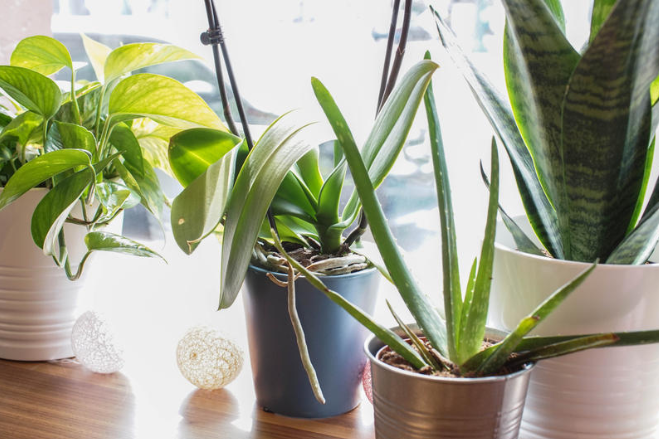Spruce up your home the eco way
If you're fed up with your living space, give it a bit of an eco makeover in the run up to spring

We can all make our homes nicer - and more eco friendly - with a bit of thought and effort
Get natural light in
Building technology has come a long way in recent years. Double glazed has given way to triple glazed windows that keep the draughts out and regulate temperature, for example. And while they are expensive, they will prove a worthwhile investment in the long run. Homes that are a bit on the dark and gloomy side can be given an injection of natural light thanks for roof lights. And while energy saving LEDs used to give only a cold white light, techological developments mean you can get much warmer more natural light from them. Some feel they'll never be quite as good as the old incandescent bulbs but they're not far off.
Plants about the house
Even if money is very tight, one good way to freshen things up is to bring plants into your home. Choose from lots of little succulents in pots and display them on shelves, or buy plants such as ivy, lilies, a cheese plant, a small palm..the more indoor plants the better because plants purify the air and absorb CO2.
Creating your own indoor garden is simple, but remember to read up on which plants need watering when and the amount of natural light they need. Ventilation is also needed so don't put a plant in a tiny dark downstairs loo! Plants indoors are good for us too because they give us a sense of the natural world.
Choose natural and organic fabrics
Try to avoid plastic where possible, so that means pure wool rugs and when it comes to accessories such as cushions and throws, look for linen fabric - flax grows widely across Europe and doesn't require so much irrigation - or organic cotton. Organic cotton is far more eco friendly than conventional cotton because the latter does need vast quantities of pesticide and water, while organic cotton requires far less of both. Also look for hemp, viscose (derived from wood pulp), and bamboo fabrics. If you have synthetic fabrics as cushion covers, don't throw them out, rather get some new covers made from a natural fibre and put them over the old cover.
Recycled materials
Not only is recycled/pre-owned a plus for the environment, second hand pieces are great for a rustic / mid century modern / country house style look. Pre-owned furniture much cheaper than new and you're be doing your bit for the circular economy. Charity shops, eBay, auction houses, car boot sales, Freecycle...these are all outlets to buy secon-hand.
Use FSC-certified woods
Check the wood products you choose have Forest Stewardship Council (FSC) certification print - there'll be a tiny logo on the product that will assure you the wood hasn't come from illegal logging. It also means the wood has been processed according to the FSC's 10 key principles of environmental protection. You can confident that FSC-certified wood furniture is environmentally friendly.
Wood over plastic for furniture
There are advantages to plastic furniture - it's lightweight, hard-wearing and it's not a disaster if it's made from a recyclable plastic and even better if the product itself is made from recycled plastic. But we need to divest ourselves of fossil fuels, so we have to stop making so much plastic. It is much greener to make furniture from wood from managed forests, from reclaimed timber or from fast growing plants such as bamboo.